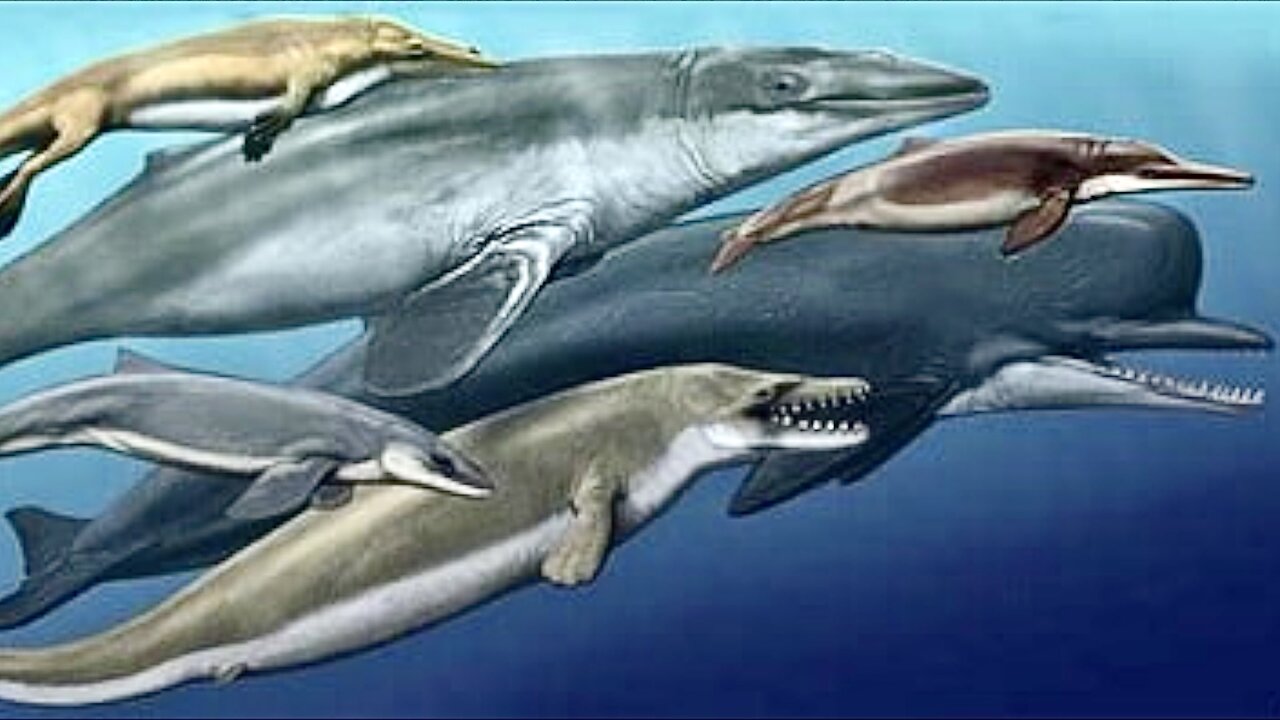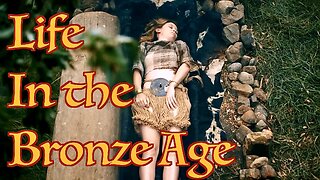Premium Only Content

How Whales Evolved From Prehistoric Wolves - Full Documentary
Whales' ancestor was a wolf in hippo's clothing- It ran like a wolf. It waded like a hippopotamus. It put its ear to the ground to hear distant rumbles. It had the ankles of a cow. But above all, it had the ear bones of a whale.
In a find that matches the discovery of archaeopteryx - one of the great missing links of evolution - researchers in Pakistan have unearthed many of the bones of the 50m-year-old Pakicetus attocki, a land-dwelling, estuary-wading, meat-eating ancestor of the whale.
And in a second dramatic find, a team sifting elsewhere in Pakistan has identified a 47m-year-old walking whale ancestor called Rhodocetus balochistanensis which had already evolved into something more aquatic. It was about the weight of a bull seal, with webbed feet, and once again it had the ankle bones of an ungulate.
Whales, dolphins and porpoises breathe air, deliver live young and suckle them. They clearly evolved on land like all other mammals, and then, over a few more million years, returned to the sea. For decades, the puzzle has been over what kind of animals first went back to the water.
In 1994, fossil hunters in Pakistan found evidence of a whale-like creature called Ambulocetus that had hands and feet. There were also tantalising fragments of an animal they named Pakicetus. Two years later, they confirmed that these creatures were estuary animals, splashing about in fresh water. But their lineage remained a puzzle.
Today, in the journal Nature, Hans Thewissen of Northeastern Ohio Universities college of medicine in Rootstown, Ohio, gives the answer. In 1992 he began sorting hundreds of fossil bones, skulls and teeth preserved in a wall of dried mud about 100ft (30 metres) long, and four feet (1 metre) high, in the Punjab - the ancient bed of a river that flowed into the open ocean.
From this assortment, he finally identified two new mammals that could be closely related to whales. One, Ichthyolestes pinfoldi, was the size of a fox. The other, Pakicetus, was as big as a wolf. Both had long legs and ankles of even-toed ungulated animals such as cows, sheep, camels - and hippos. And both have the ear bones of the cetaceans. Both must have splashed into the water to forage for food.
"The site is an ephemeral river channel in a dry climate too shallow for pakicetids to swim. I think they may have waded, and yes, I do think they heard by pushing their ears to the ground," Dr Thewissen said.
And in the journal Science tomorrow, Phil Gingerich of the University of Michigan at Ann Arbor reports on the discovery of a new fossil whale called Artiocetus clavis - and the identification of an ankle bone that points to the same ancestral link with camels, deer, cows, sheep, pigs and hippos. It belonged to a second new species called Rhodocetus that lived in the same region 47m years ago. It probably had webbed hands and feet, and its tail would have helped propel it through the water.
"It is clear that these animals could hitch their way out of water and back in like sea lions do today, but they were more aquatic than I realised," said Prof Gingerich.
#evolution #animals #nature
-
 52:31
52:31
Knowledge Land
1 month agoMystery of the 3,000 Year Old Girl from Egtved Denmark - Life in the Bronze Age
781 -
![Shadows Of Chroma Tower, Alpha Playtest [Part 1]](https://1a-1791.com/video/fwe2/1d/s8/1/5/Q/U/n/5QUnx.0kob-small-Shadows-Of-Chroma-Tower-Alp.jpg) LIVE
LIVE
iViperKing
8 hours agoShadows Of Chroma Tower, Alpha Playtest [Part 1]
1,422 watching -
 54:05
54:05
TheGetCanceledPodcast
6 hours ago $6.23 earnedThe GCP Ep.11 | Smack White Talks Smack DVD Vs WorldStar, Battle Rap, Universal Hood Pass & More...
68K18 -
 13:37
13:37
Exploring With Nug
10 hours ago $0.99 earnedSUV Found Underwater Searching For Missing Man Jerry Wilkins!
46K1 -
 2:58:21
2:58:21
xBuRnTx
5 hours ago1st Warzone Stream Online
29.2K2 -
 6:10:21
6:10:21
JdaDelete
1 day ago $0.48 earnedDino Crisis - Sega Saturday
37.1K2 -
 23:22
23:22
MYLUNCHBREAK CHANNEL PAGE
1 day agoUnder The Necropolis - Pt 5
48.2K26 -
 2:26:11
2:26:11
Jewels Jones Live ®
2 days agoWINNING BIGLY | A Political Rendezvous - Ep. 108
117K41 -
 2:04:49
2:04:49
Bare Knuckle Fighting Championship
4 days agoBKFC FIGHT NIGHT MOHEGAN SUN FREE FIGHTS
51.7K7 -
 25:09
25:09
BlackDiamondGunsandGear
8 hours agoYou NEED to be Training For Whats to Come
36.5K11